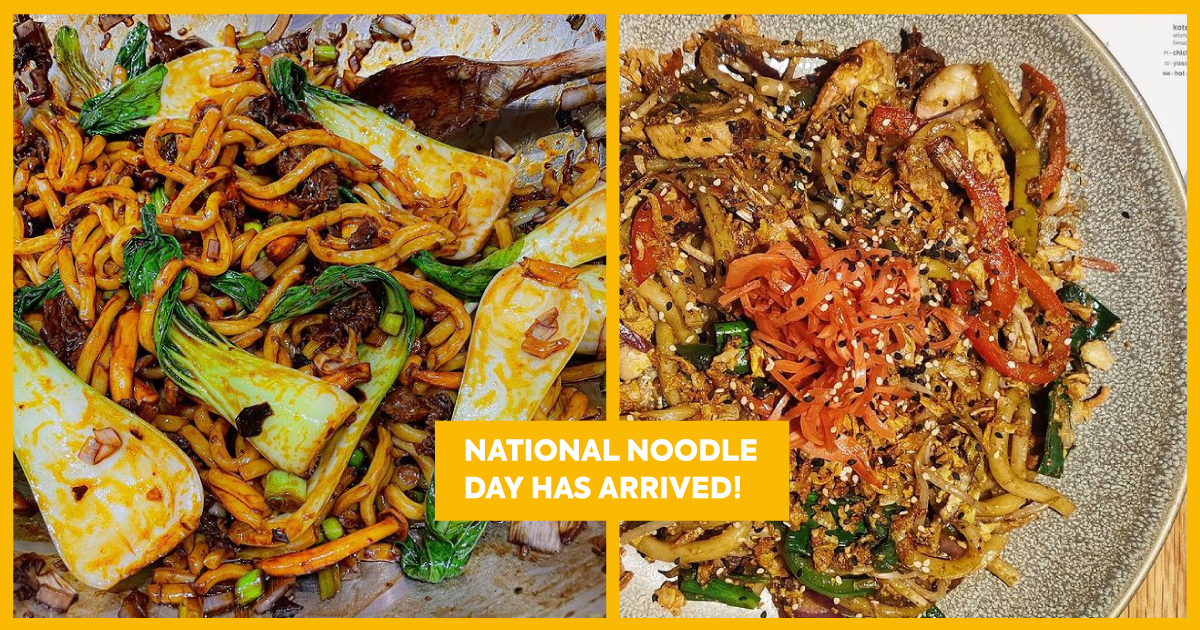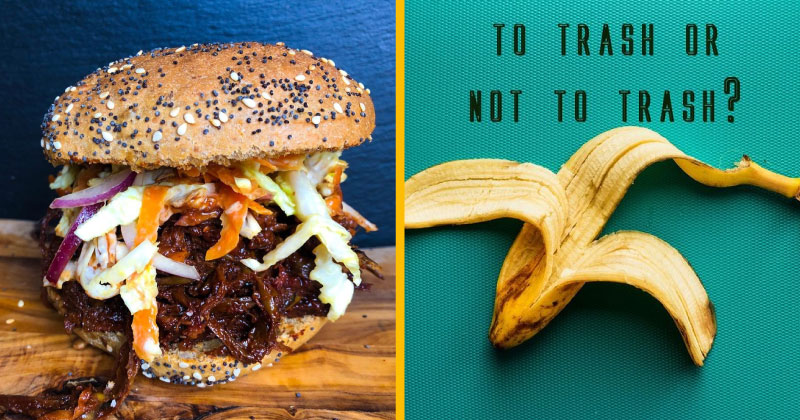Noodles: Your Ultimate Guide to the Different Types of Noodles 🍜

U-don (see what I did there?) know what Asian food is until you’ve tasted noodles. The variety is so huge that whatever you feel like cooking, you can always add noodles to it. 👍
Feeling sad? Noodles can make you feel better. Feeling happy? Celebrate with noodles. Feeling cold? Noodles can warm you right up. Feeling hot? Have some cold noodles. Looking for gluten free, lactose free, or meat free versions? There’s a noodle for that. 🥳
Noodles mainly differ in their main ingredients, and in their thickness and slurpiness (yes, that’s going to be a word from now on). If you’re looking to make a noodle dish but you’re not sure what to choose or how to cook them, don’t worry. That’s what we’re here for. Have a look at these noodles that we’re nuts about:
Soba
- Slurp level: high
- Thickness: medium
- Best Soba Noodle Restaurant: Wagamama & Genki Asian Cafe
- Best Dishes: Wagamama's Yasai Yaki Soba & Genki's Beef Teriyaki Soba Noodles
These guys should be named ‘so-gu’, because they’re so damn good. They are very tricky to make from scratch, and that is why we are very thankful for store-bought ready-made soba noodles. There are actual professional soba noodle makers that have tons of years of experience and use special equipment, so the ready-made version should make us feel lucky. 🍀
The main ingredients of soba noodles are buckwheat flour and water, but sometimes they can also contain whole wheat flour since 100% buckwheat noodles tend to fall apart. They are sometimes found in soups but usually eaten as a main dish, like in Yaki Soba. When you’re cooking soba noodles, give your full attention to the noodles as they cook in about 3 to 5 minutes. Cook soba in small batches, otherwise the noodles stick together, and cook them right before you’re ready to eat. 💖
Rice
- Slurp level: low
- Thickness: low
- Best Rice Noodle Restaurant: Noodle Box by MedAsia & Genki Asian Cafe
- Best Dishes: Literally any Rice Noodle Combo from Noodle Box & Genki's Tofu Stir Fry Rice Noodle
Just as the name suggests, the main components of rice noodles are rice flour and water. In some instances, cornstarch is also added to the mixture to achieve a chewier texture and more transparent look. Rice noodles are chewy and gelatinous in texture, and thin and transparent or white in appearance. 🍚
Alone, they might taste a bit bland, but they make an excellent stir fry dish. They are most commonly used in pad thai and Vietnamese pho. They are also quick to cook, so keep an eye out when you’re making a dish with these bad boys. Check out this amazing recipe for Pad Thai from Bon Appetit. ✌️
Udon
- Slurp level: high
- Thickness: high
- Best Udon Noodle Restaurant: Okurama & Wagamama
- Best Dishes: Okurama's Yaki Udon & Wagamama's Ginger Chicken Udon
The slurpiness of these udon noodles is through the roof! They are thick, soft noodles that are slightly chewy in texture and light yellowish in colour. They are wheat-based and are great in soups. If you’re going to use udon noodles, do not let their thickness fool you - they can still be cooked thoroughly in 3 minutes if they’re fresh, or about 8 minutes if they’re dried. 🥢
Apart from being used in soups, udon noodles are also used in a variety of other dishes, both warm and cold. They can be used in yummy yaki udon, which is a warm dish, and zaru udon, which is a dish made of chilled udon noodles with shredded nori and served with a cold dipping sauce, grated ginger, and wasabi. Here’s another super recipe from Bon Appetit: Stir Fried Udon with Pork. 🇯🇵
Ramen
- Slurp level: high
- Thickness: medium
- Best Ramen Restaurant: Sapporo Ramen by Tokyo Fried House & KuYa
- Best Dishes: Sapporo's Miso Ramen & Kuya's Shoyu Pork Belly Ramen
We’re pretty sure you’ve all heard of this. Ramen technically refers to warm noodle soup that combines Japanese soup, usually a rich, well-seasoned chicken broth, and Chinese noodles. The noodles used in this soup are referred to as ramen noodles. Since they’re used in soups, they are quite slurpy. They tend to be a little chewy in texture and also a bit bouncy. 🍜
Ramen noodles are thin wheat-based noodles that are made from flour, salt, water, and an alkaline agent that gives the noodles its bounce and yellow colour. They can be either dried, like those instant pot noodles we buy at the supermarket, or fresh. You can make ramen at home using The Kitchn’s recipe. 🍲
Egg
- Slurp level: medium
- Thickness: medium
- Best Egg Noodle Restaurant: Shaukiwan & Wok to Walk
- Best Dishes: Shaukiwan's Chicken Noodle Box & Wok to Walk's Chicken + Broccoli Noodle Box
These soft, delicious noodles are the most common ones. You can find them in any supermarket and sometimes they come in different varieties of thickness, but they’re rarely super thin. They are made with just flour and eggs and are perfect for stir-fries. 🥚
They usually take around 3 to 4 minutes to cook when they’re fresh, and about 7-8 minutes when they’re dried. Make sure to use a large pot if you’re cooking egg noodles - they tend to get thicker when you boil them, so they need space. They are most commonly used in Lo Mein and Chow Mein. 🥡
Glass
- Slurp level: low
- Thickness: low
- Best Glass Noodle Restaurant: Blue Elephant & Benjawan Thai Cuisine
- Best Dishes: Blue Elephant's Phad Thai & Benjawan's Pad Thai Woon Sen
Glass noodles are also known as cellophane noodles due to their appearance. They are thin noodles that are almost white when dried, but they become transparent when they’re cooked. They are very thin yet heavy noodles with a soft texture. Their main ingredients are starch and water. 🚰
These noodles are those thin strings that you find in spring rolls. They are also used in some soups and even in stir fries. They are usually served at the bottom of the plate with the other ingredients on top of it, since they absorb liquids quite quickly. To cook them, you can either boil them for 3 to 4 minutes or just soak them in hot water for about 10 to 12 minutes. They tend to stick together, so toss them with a bit of oil after you boil them. If you’re using them in stir fries, we suggest that you cut them in at least half, since their length will make it difficult for you to mix them around. 💪
Noodles make a great meal, whether you’re looking to indulge or eat healthy. The best ingredients to add to your noodles are soy sauce, sesame oil, rice vinegar, spring onions, bean sprouts, peppers, and toasted sesame seeds. You can also add chicken, pork, beef, or duck to add some meat to your dish, or else add tofu to keep it meat-free. 🙋♀️
Share your noodle recipes with us by tagging us in your posts on Facebook or Instagram! 📱









Comments